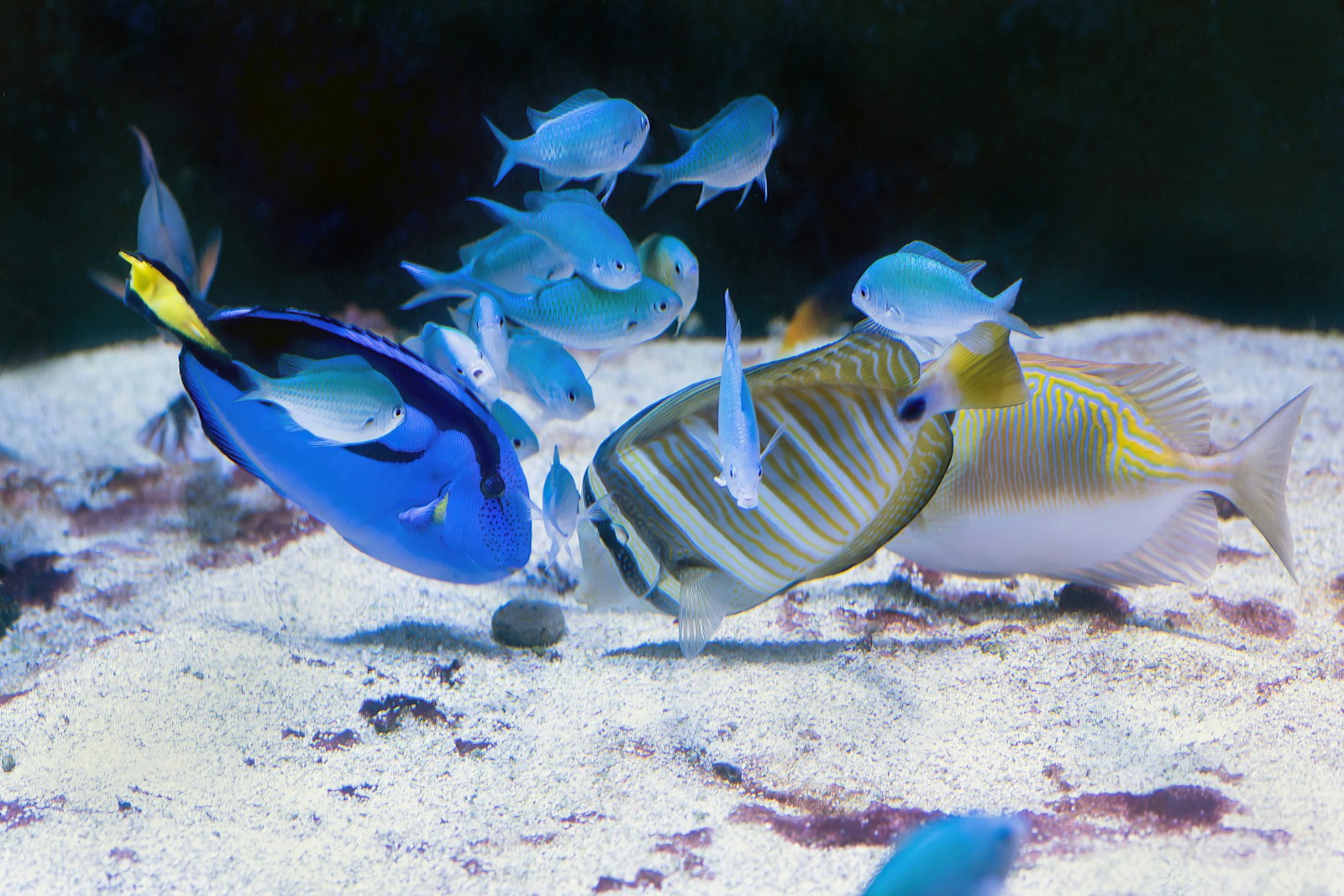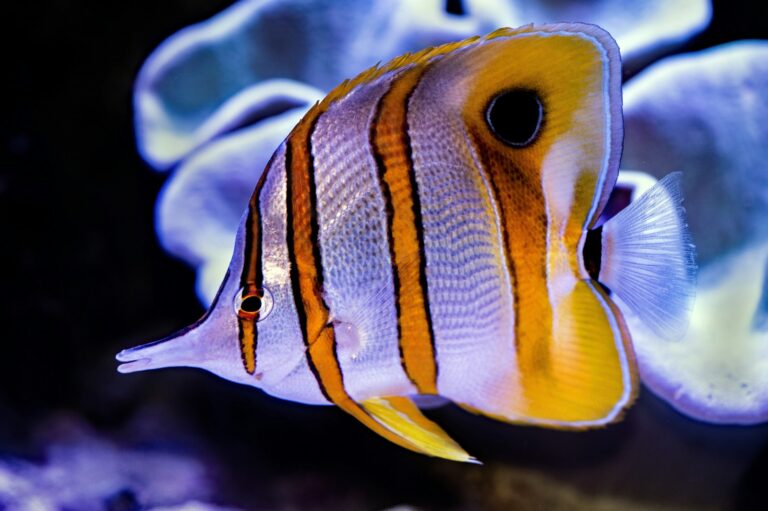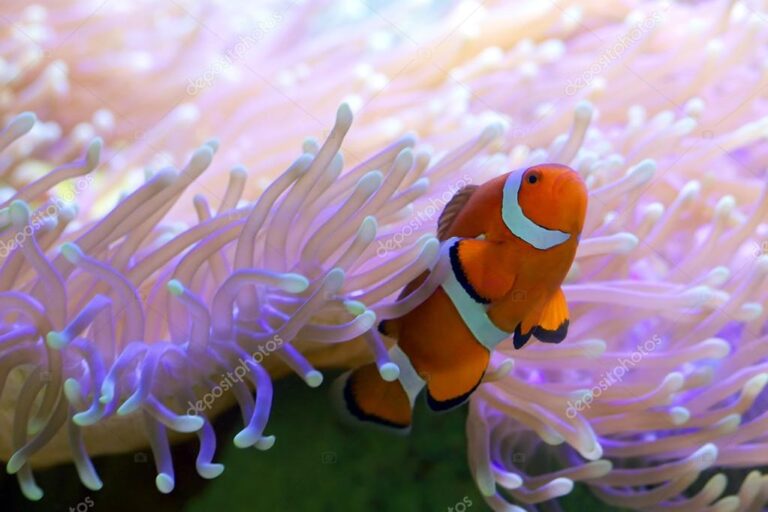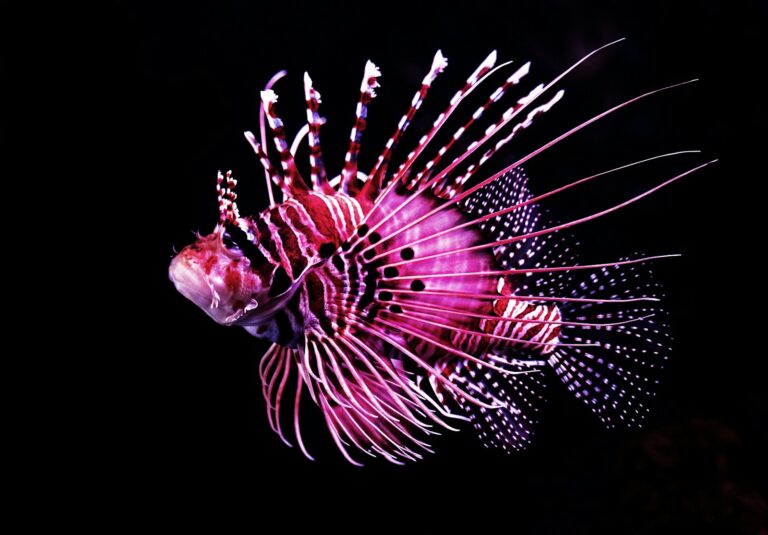The Ultimate Guide to Blue Tang Care in Saltwater Aquariums

Blue Tangs, with their vivid blue bodies and striking yellow tails, are among the most sought-after saltwater fish for aquarium hobbyists. Whether you’re enchanted by their vibrant colors or their captivating movements, Blue Tangs add unmatched beauty and energy to any saltwater setup. But caring for these iconic fish requires more than admiration—it calls for a deep understanding of their unique needs and behaviors.
This guide provides comprehensive insights to help you create a thriving environment for Blue Tangs, covering everything from their natural habitat and diet to tank mates and disease prevention.
Meet the Blue Tang: A Vibrant Ocean Icon
Renowned for their appearance and charm, Blue Tangs (Paracanthurus hepatus), also known as Regal Tangs, are not just popularized by the beloved film Finding Nemo. Their electric blue bodies marked with a bold black pattern and sunny yellow tails make them one of the most recognizable saltwater fish species. Typically growing up to 12 inches in length, Blue Tangs are not only stunning but also full of personality, providing endless fascination in marine aquariums.
Expert Insight:
“Blue Tangs add a splash of vibrant color and activity to any reef tank, making them a favorite among saltwater enthusiasts.” – Dr. Marine Biologist, Aquarium Expert
Before bringing one home, it’s essential to understand their specific needs to ensure they remain healthy and stress-free.

Natural Habitat and Behavior of Blue Tangs
Blue Tangs are native to the Indo-Pacific region, inhabiting coral reefs in places like the Philippines, Indonesia, and Australia. They thrive in these complex ecosystems by grazing on algae and swimming actively in open waters.
Their wild behavior can give insights into providing proper care in captivity:
- Active Swimmers: They prefer ample swimming space due to their energetic nature.
- Social Creatures: Blue Tangs are schooling fish in the wild but can become aggressive toward their species in confined spaces.
- Algae Eaters: Their natural diet consists primarily of algae, which sustains health and limits algae growth in reefs.
Replicating their natural habitat as closely as possible is key to creating a stress-free and enriching environment.
Setting Up the Perfect Aquarium for Blue Tangs
Caring for Blue Tangs starts with providing them a well-designed home. Here’s what you’ll need to set up an ideal environment for them to thrive:
Tank Size
Due to their size and activity level, Blue Tangs require a spacious tank—at least 100 gallons for a single individual, with larger tanks recommended if keeping multiple specimens or creating a reef tank.
Filtration
Maintaining pristine water quality is paramount. Invest in a high-quality filtration system capable of handling your tank’s bioload. A protein skimmer is also recommended to remove organic waste and improve overall water clarity.
Lighting
Blue Tangs don’t have specific lighting requirements, but if your tank includes corals or other light-sensitive inhabitants, ensure appropriate lighting for your reef setup, such as LED systems tailored for marine aquariums.
Water Parameters
Keeping water stable is vital to preventing stress and disease in Blue Tangs. Aim for these conditions:
- Temperature: 75–80°F
- pH Level: 8.1–8.4
- Salinity: 1.020–1.025 SG
- Ammonia/Nitrite levels: Always 0 ppm
Expert Advice:
“Maintaining stable water parameters is crucial for the health of Blue Tangs, as they are sensitive to changes in water quality.” – John Reefkeeper, Experienced Hobbyist
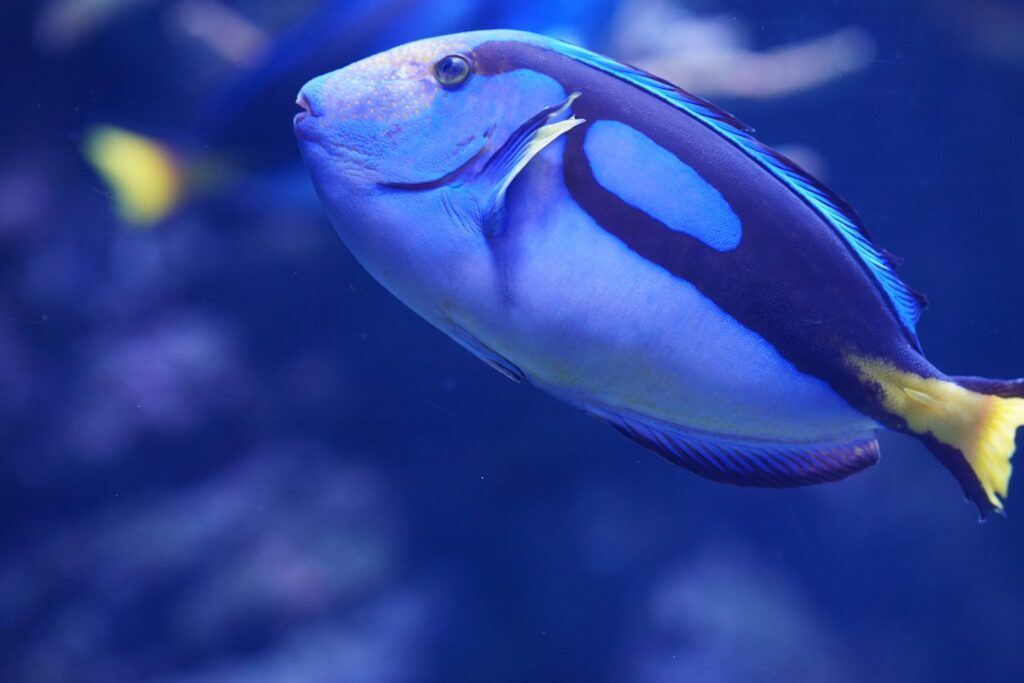
Diet and Feeding Guidelines
Blue Tangs are primarily herbivores, but they benefit from a varied diet containing plant-based and protein-rich foods. A well-fed Blue Tang is not only healthier but also showcases its vibrant colors more brilliantly.
What to Feed Your Blue Tang:
- Algae & Seaweed: Dried seaweed sheets or nori should make up the majority of their diet.
- Vegetables: Blanched spinach, zucchini, or lettuce can be offered occasionally.
- High-Quality Pellets or Flakes: Look for marine formulations rich in algae.
- Frozen or Fresh Foods: Meaty foods like brine shrimp or mysis shrimp can be given as supplements.
Feed small amounts twice a day to mimic their natural grazing behavior.
Expert Tip:
“A varied diet consisting of high-quality seaweed, algae, and meaty foods will ensure your Blue Tang thrives in captivity.” – Susan Aquarist, Saltwater Specialist
Common Diseases and Prevention
Blue Tangs, while hardy, are susceptible to certain health issues, often triggered by stress or poor water quality. Here are the most common ailments to watch for and how to prevent them:
Common Diseases:
- Marine Ich (Cryptocaryon irritans): White spots on the body, rapid breathing, and rubbing against surfaces.
- Head and Lateral Line Erosion (HLLE): Can result from nutritional deficiencies or high stress.
Prevention Tips:
- Perform regular water changes and monitor parameters diligently.
- Quarantine new fish to prevent introducing diseases into your tank.
- Maintain a stress-free environment with proper tank size and enrichment.
- Provide a vitamin-rich diet to boost immunity.
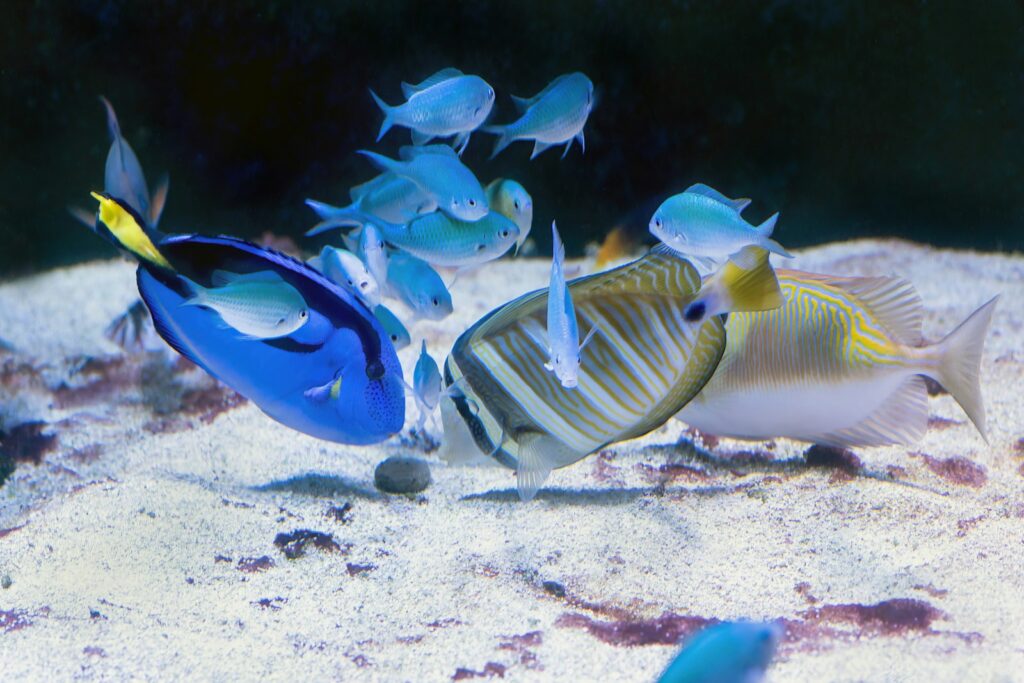
Choosing Compatible Tank Mates
Blue Tangs can coexist peacefully with many saltwater species, but choosing compatible tank mates is essential for harmony.
Great Tank Mates for Blue Tangs:
- Clownfish (Amphiprioninae): Popular, colorful, and peaceful.
- Gobies (Gobiidae): Bottom-dwelling and unassertive.
- Wrasses (Labridae): Active swimmers that share similar energy levels.
- Cardinalfish (Apogonidae): Peaceful and easygoing.
Tank Mates to Avoid:
- Fish with similar body shapes, like other tangs, as this can trigger territorial aggression.
- Aggressive or highly competitive species that may outcompete them for resources.
Essential Care Tips for Thriving Blue Tangs
Creating a thriving environment for Blue Tangs can be deeply rewarding. Here are a few final care tips to keep in mind:
- Start with a healthy fish from a reputable dealer to minimize stress and disease risks.
- Regularly check water quality and ensure all filtration systems are functioning optimally.
- Feed a varied, nutritious diet to maintain health and vivid coloration.
- Take it slow—avoid adding too many tank mates or making rapid changes to their environment.
Build a Spectacular Blue Tang Reef Today!
With their vibrant hues and playful personalities, Blue Tangs are undeniably rewarding to keep. However, their care demands a bit of expertise and diligent maintenance to ensure they thrive. By setting up a spacious tank, mimicking their natural diet, and choosing compatible neighbors, you’ll create a vibrant, dynamic marine ecosystem that brings the beauty of the ocean into your home.
For further guidance, check out resources from leading aquarists or consult with experienced hobbyists. Remember, the reward lies not only in the beauty of your tank but also in the joy of creating a healthy, thriving habitat for these stunning creatures.
Meta Data
Meta Title: Blue Tang Care Guide for Saltwater Tanks
Meta Description: Learn how to care for Blue Tangs with this ultimate guide. Tips on tank setup, diet, tank mates, and keeping them healthy. Create your perfect reef today!

